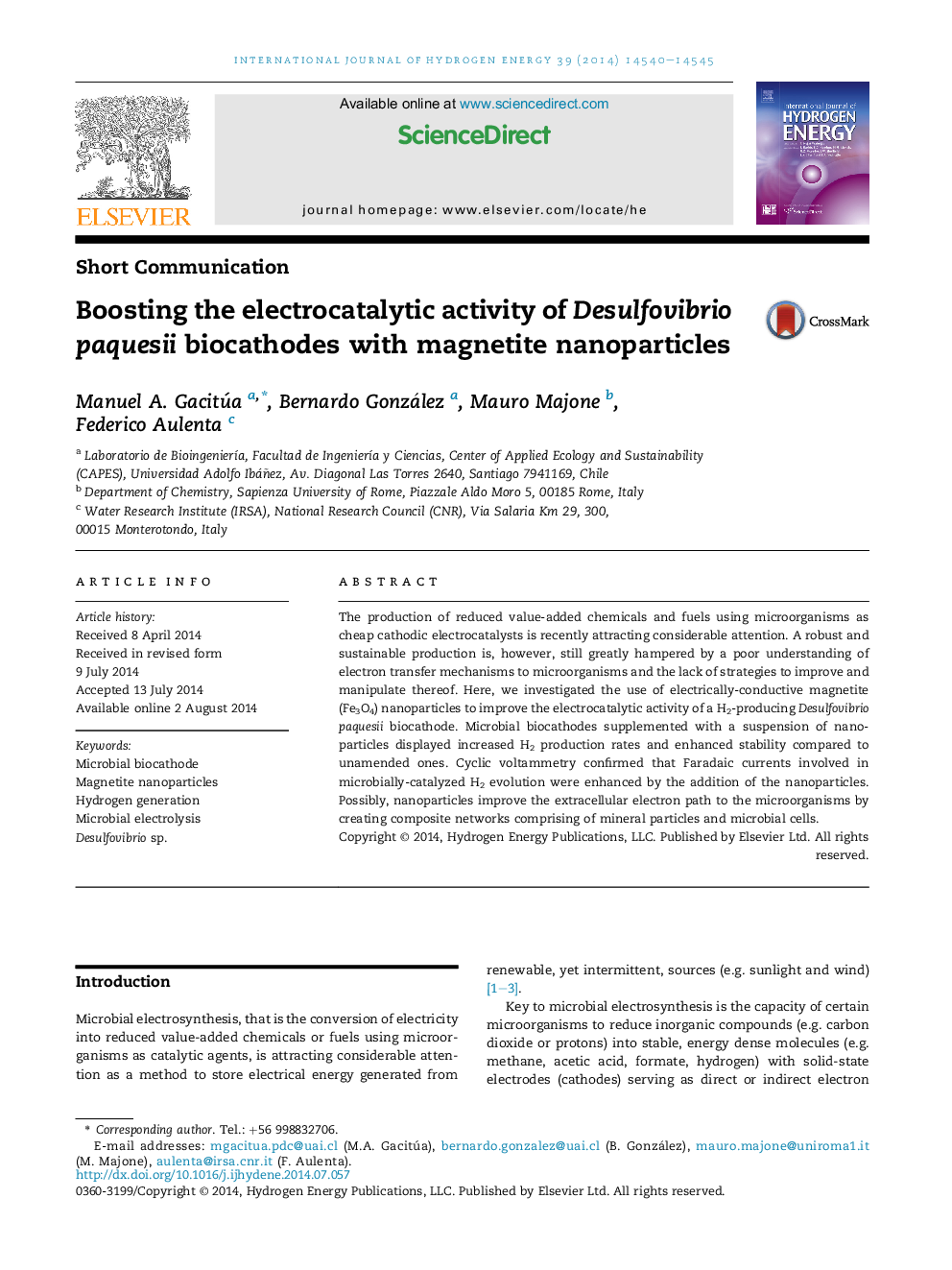| Article ID | Journal | Published Year | Pages | File Type |
|---|---|---|---|---|
| 7718011 | International Journal of Hydrogen Energy | 2014 | 6 Pages |
Abstract
The production of reduced value-added chemicals and fuels using microorganisms as cheap cathodic electrocatalysts is recently attracting considerable attention. A robust and sustainable production is, however, still greatly hampered by a poor understanding of electron transfer mechanisms to microorganisms and the lack of strategies to improve and manipulate thereof. Here, we investigated the use of electrically-conductive magnetite (Fe3O4) nanoparticles to improve the electrocatalytic activity of a H2-producing Desulfovibrio paquesii biocathode. Microbial biocathodes supplemented with a suspension of nanoparticles displayed increased H2 production rates and enhanced stability compared to unamended ones. Cyclic voltammetry confirmed that Faradaic currents involved in microbially-catalyzed H2 evolution were enhanced by the addition of the nanoparticles. Possibly, nanoparticles improve the extracellular electron path to the microorganisms by creating composite networks comprising of mineral particles and microbial cells.
Keywords
Related Topics
Physical Sciences and Engineering
Chemistry
Electrochemistry
Authors
Manuel A. Gacitúa, Bernardo González, Mauro Majone, Federico Aulenta,
